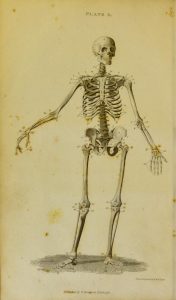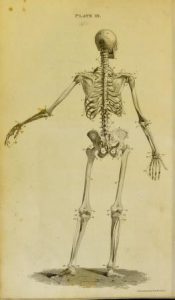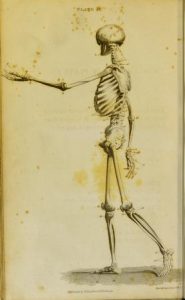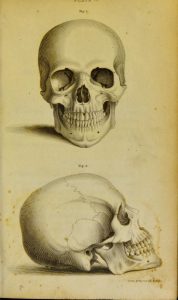 The Medical Heritage Library, Inc. is a collaborative digitization and discovery organization committed to providing open access resources in the history of healthcare and the health sciences.
The Medical Heritage Library, Inc. is a collaborative digitization and discovery organization committed to providing open access resources in the history of healthcare and the health sciences.
We aspire to be a visible, research-driven history of medicine and health community that serves a broad, interdisciplinary constituency. Our goal is to make high-quality content available online free of charge and to simplify and centralize the discovery of these resources.
Organized in 2009, begun in 2010, and incorporated in 2019, the Medical Heritage Library derives its strength – as a content-centered digital community and as a curated resource – by actively seeking new opportunities to digitize primary resources in the history of medicine through grant-funded initiatives and efforts to identify like-minded institutions willing to share content through the MHL’s Internet Archive collection. Grant funding from the National Endowment for the Humanities, the Alfred P. Sloan Foundation, the Arcadia Fund, and the Council on Library and Information Resources has made it possible for us to address digitization gaps, negotiate open access, such as for our State Medical Journals project, and build tools to better utilize MHL resources.
The MHL was initiated by the Open Knowledge Commons, which was awarded $1.5 million dollars in start-up funding from the Alfred P. Sloan Foundation to begin digitization at partner libraries.
Through active community building and coordinated content selection, the MHL facilitates much needed discourse around the contemporary practice of medicine (anatomy, audiology, gynecology and reproductive health, physiology, surgery), mental health (psychology, psychiatry), nursing, neuroscience, public health, dentistry, infectious disease, and the biological sciences, as well as associated subjects, such as tobacco use, veterinary medicine, gardening, physical culture, and alternative medicine. The MHL includes materials in a variety of languages, including English, French, Spanish, German, Latin, Portuguese, and Dutch. We select materials for scholarly, educational, and historical value.
MHL facilitates much needed discourse around the contemporary practice of medicine (anatomy, audiology, gynecology and reproductive health, physiology, surgery), mental health (psychology, psychiatry), nursing, neuroscience, public health, dentistry, infectious disease, and the biological sciences, as well as associated subjects, such as tobacco use, veterinary medicine, gardening, physical culture, and alternative medicine. The MHL includes materials in a variety of languages, including English, French, Spanish, German, Latin, Portuguese, and Dutch. We select materials for scholarly, educational, and historical value.
The MHL is a digital curation collaborative among some of the world’s leading medical libraries, promotes free and open access to quality historical resources in medicine. Our goal is to provide the means by which readers and scholars across a multitude of disciplines can examine the interrelated nature of medicine and society, both to inform contemporary medicine and strengthen understanding of the world in which we live. The MHL’s growing collection of digitized medical rare books, pamphlets, journals, and films number in the tens of thousands, with representative works from each of the past six centuries, all of which are available here through the Internet Archive. The original founders of this project were:
 Prior to incorporation in 2018, the MHL defined participation by member institutions in terms of contributor levels. These levels were fully described in the 2016 Membership Structure document.
Prior to incorporation in 2018, the MHL defined participation by member institutions in terms of contributor levels. These levels were fully described in the 2016 Membership Structure document.
The MHL was composed of Principal Contributors, Content Contributors, and Advocates. Principal Contributors are those institutions who both deposit history of medicine content to the MHL and make an annual financial contribution (or perform work on behalf of the MHL that is equivalent to an annual financial contribution) to support MHL operations.
Content Contributors contribute existing digitized content generated by their own institutions that meets MHL criteria and deposit it the Internet Archive tagged as part of the MHL collection. Content Contributors promote their MHL collections, link to the MHL website, distribute MHL promotional and print materials, and seek opportunities for collaboration, such as co-sponsoring events. The MHL has over 30 partner libraries in the United States, Canada, and the United Kingdom; a complete list may be found on our website.
Advocates publicize and promote the work of the MHL and encourage peer libraries, archives, special collections, faculty, students, or other constituencies to use or develop MHL resources. While advocates do not contribute content to the MHL, they provide the MHL with critical opportunities to expand its audience.
libraries, archives, special collections, faculty, students, or other constituencies to use or develop MHL resources. While advocates do not contribute content to the MHL, they provide the MHL with critical opportunities to expand its audience.
 John Elliotson (1791-1868) studied medicine at the University of Edinburgh and Jesus College, Cambridge. A strong interest in phrenology and mesmerism, which traditional practitioners were reluctant to accept as valid medical or scientific disciplines, led him to resign his post as physician to London’s University College Hospital in 1838.
John Elliotson (1791-1868) studied medicine at the University of Edinburgh and Jesus College, Cambridge. A strong interest in phrenology and mesmerism, which traditional practitioners were reluctant to accept as valid medical or scientific disciplines, led him to resign his post as physician to London’s University College Hospital in 1838.










